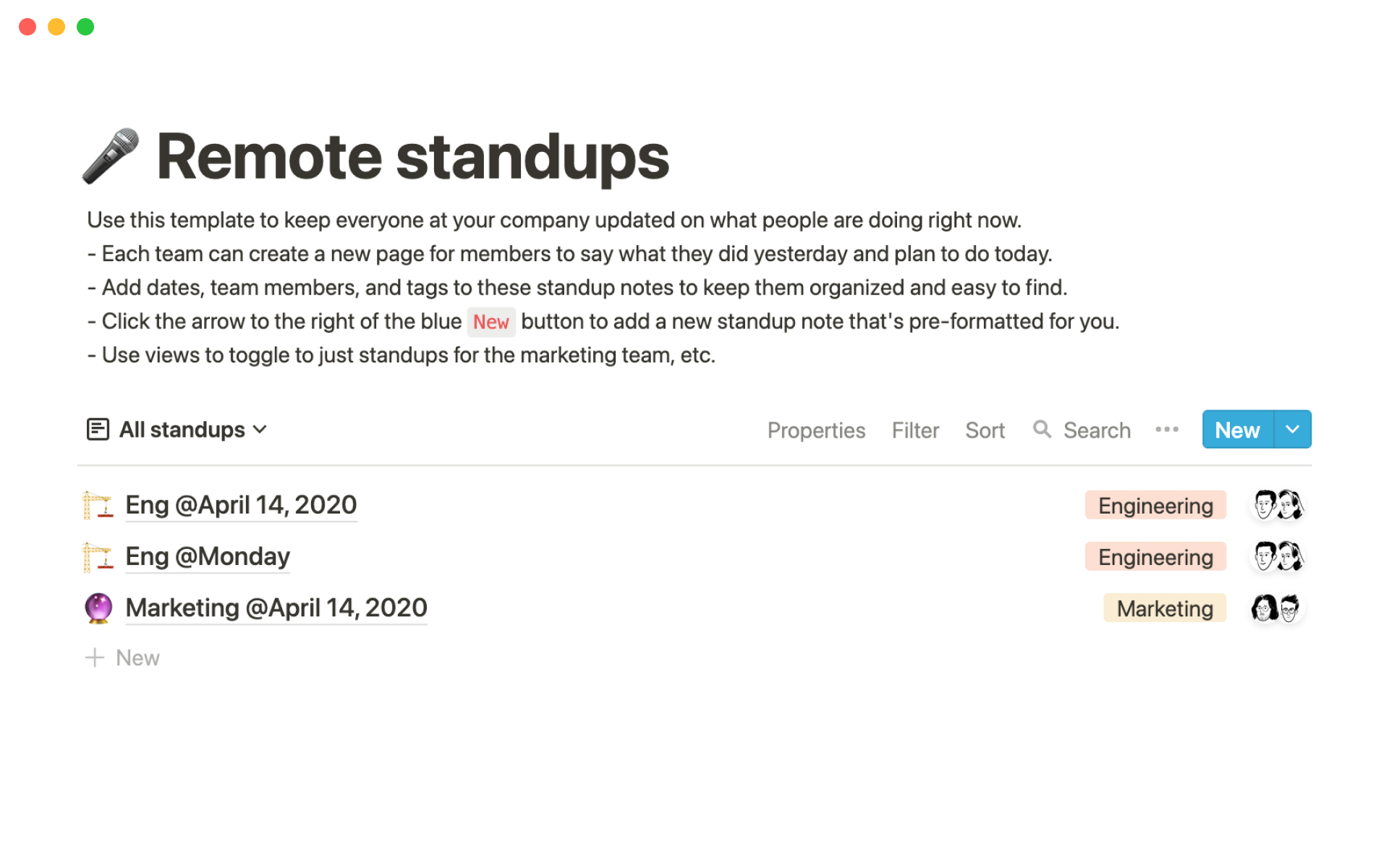Standup meetings serve as a rapid-fire check-in for product strategist teams, enabling them to align on current projects, highlight any obstacles, and adjust strategies quickly. A well-structured Standup Meeting template in Notion can streamline this process, offering a clear format for updates and facilitating effective communication. Before you embark on creating your own Standup Meeting template, consider exploring the examples provided below. These templates are designed to simplify the meeting process, ensuring that your team can focus on strategic discussions with ease.
What Should Standup Meeting Templates Include?
Choosing the right Standup Meeting Template can streamline the process and enhance productivity. Here are key components to look for in an effective template:
Clear Objectives: Each meeting should begin with a clear statement of its goals. A good template will have a dedicated section to outline these objectives, ensuring that every participant understands the meeting's purpose.
Participant List: It should include a predefined space for listing all participants. This helps in tracking attendance and also clarifies who is responsible for what during the meeting.
Time Allocation: Effective templates will have segments with allocated times for each agenda item. This keeps the meeting concise and focused, preventing overrun and ensuring that all topics are adequately covered.
Action Items: A section for action items and their respective owners is crucial. This ensures accountability and follow-ups, making the standup meetings productive and actionable.
Ultimately, the best template is one that suits your team's specific needs while fostering efficiency and clarity during your standup meetings.
What Should Standup Meeting Templates Avoid?
Choosing the right Standup Meeting template is crucial for maintaining the efficiency and focus of your team. It's equally important to know what to avoid in a template to ensure productivity.
Overly Complex Structures: Avoid templates that include too many sections or complicated hierarchies. They can lead to longer meetings and reduce clarity.
Fixed Time Slots: Templates that rigidly allocate specific times for each speaker can stifle discussion and prevent important issues from being thoroughly addressed.
Irrelevant Metrics: Steer clear of templates that focus on metrics unrelated to your team's current objectives. This can divert attention from critical agenda items.
Remember, the best templates are those that enhance communication and streamline the meeting process without adding unnecessary complexity or distractions.













